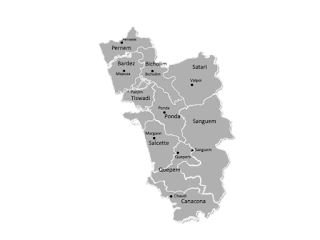Uttarakhand
Uttarakhand, often referred to as the "Land of the Gods" due to its numerous Hindu pilgrimage sites and breathtaking natural beauty, is a state located in the northern part of India. With a rich cultural heritage, diverse geography, and significant historical background, Uttarakhand presents a tapestry of experiences that span from spiritual journeys in ancient temples to thrilling adventures in its lofty mountains and pristine rivers.
Geography and Climate
Uttarakhand is situated in the Himalayan region and is bordered by Tibet Autonomous Region of China to the north, Nepal to the east, and the states of Himachal Pradesh and Uttar Pradesh to the west and south respectively. The state is divided into two regions: the Garhwal region and the Kumaon region, each known for their distinct culture, dialects, and landscapes.
The geography of Uttarakhand is characterized by its rugged terrain with peaks like Nanda Devi, Trisul, and Bandarpunch dominating the skyline. Glaciers such as Gangotri and Yamunotri are the sources of major rivers like the Ganges and Yamuna, which flow through the state and are considered sacred by Hindus. The climate varies from subtropical in the southern plains to alpine in the northern mountain ranges, with heavy snowfall in winter attracting tourists to popular hill stations like Mussoorie, Nainital, and Ranikhet.
History and Culture
Uttarakhand has a deep historical significance, being part of the ancient Kuru and Panchal kingdoms mentioned in the Mahabharata. The region saw the development of various kingdoms such as the Katyuri, Chand, and Garhwal kingdoms, each leaving their mark on the cultural landscape of the state.
The culture of Uttarakhand is rich and diverse, characterized by its folk music, dance forms like the famous 'Jhora' and 'Chholiya', and traditional festivals such as Holi, Diwali, and the Kumbh Mela. The state is known for its handicrafts including wood carvings, woolen shawls, and intricate jewelry, reflecting the skills passed down through generations.
Pilgrimage Centers
Uttarakhand is renowned as a major pilgrimage destination for Hindus. The Char Dham Yatra, which includes the sacred sites of Yamunotri, Gangotri, Kedarnath, and Badrinath, attracts millions of devotees and tourists each year. The state is also home to numerous temples and shrines dedicated to various deities such as Lord Shiva, Goddess Parvati, and Lord Vishnu, with Rishikesh and Haridwar being prominent centers of spiritual learning and devotion.
Biodiversity and Conservation
The biodiversity of Uttarakhand is exceptional, with a wide range of flora and fauna due to its varied climatic zones and altitudes. The Jim Corbett National Park, India's oldest national park, is famous for its population of Bengal tigers and other wildlife species. The Nanda Devi Biosphere Reserve, a UNESCO World Heritage site, protects the unique ecosystem of the Himalayas and is a haven for trekkers and nature enthusiasts.
Conservation efforts in Uttarakhand are focused on preserving its natural resources and wildlife habitats while promoting sustainable tourism practices. Initiatives like eco-tourism and community-based conservation projects aim to balance development with environmental protection.
Adventure Tourism
Uttarakhand offers numerous opportunities for adventure enthusiasts, including trekking, skiing, river rafting, and paragliding. The trekking trails in Uttarakhand range from easy walks to challenging expeditions in the Himalayan peaks, attracting trekkers from around the world. Skiing resorts like Auli and Dayara Bugyal are popular during the winter months, while the rivers Ganges and Alaknanda provide thrilling white-water rafting experiences.
Socio-economic Aspects
The socio-economic landscape of Uttarakhand is diverse, with agriculture, tourism, and hydroelectric power being major contributors to the state's economy. The rural population engages in farming of crops such as rice, wheat, and fruits, while tourism supports a growing service industry catering to visitors from across India and abroad.
Challenges faced by Uttarakhand include sustainable development in the face of increasing tourist footfall, conservation of fragile ecosystems, and infrastructure development to support growing populations in urban centers.
Conclusion
Uttarakhand is a land of contrasts and diversity, where ancient traditions blend with modern aspirations against a backdrop of stunning natural beauty. Its spiritual significance, vibrant culture, and opportunities for adventure make it a unique destination for travelers seeking both solace and excitement. As Uttarakhand continues to evolve, balancing preservation with progress, its allure as a Himalayan gem remains undiminished, inviting exploration and discovery by all who visit.





